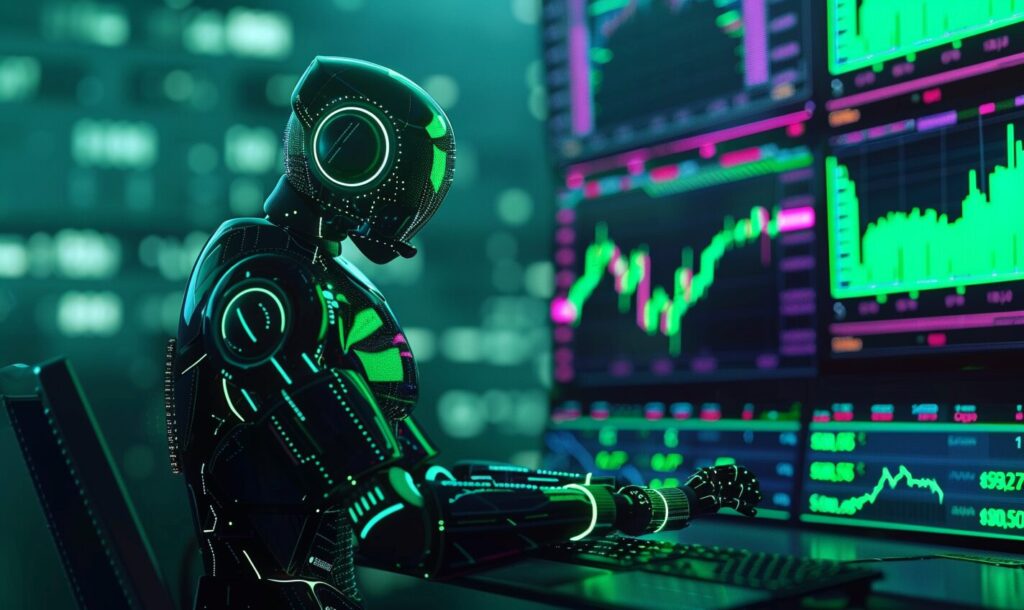Generative AI refers to artificial intelligence algorithms capable of creating new content, whether text, images, code or music. Unlike traditional AI — which analyzes and responds to inputs — generative AI goes further by producing new, original outputs.
It leverages complex machine learning models — particularly deep learning and neural networks — to understand patterns, styles or structures in massive data sets, enabling it to generate similar but unique content.
What is Generative AI?
Generative AI’s roots trace back to the late 1950s with the advent of machine learning, evolving significantly as computational power and data availability expanded. This evolution came with the development of neural networks in the 1980s and 1990s, laying the groundwork for advanced AI capabilities.
In addition, the emergence of deep learning in the 2000s — a subset of machine learning with layered neural networks — opened new possibilities for AI in data generation. The core technologies driving generative AI include the following:
- Machine learning: Developers train algorithms to make predictions or decisions
- Neural networks: Interconnected nodes mimic the human brain’s structure for complex pattern recognition.
- Deep learning: Networks with more layers handle vast data and complex, nuanced generation tasks.
- Generative adversarial networks: Two neural networks working in tandem to create realistic synthetic data.
- Variational Autoencoders: Compress and regenerate data with variations.
How Generative AI Works
The generative AI process begins with inputting an extensive, diverse data set into the system, including text, images, sounds or other relevant data. The quality and diversity of this data are crucial for effective learning.
The AI algorithm — typically based on advanced machine learning techniques — is then trained on this data. During training, the algorithm learns to recognize patterns, styles and structures inherent in the data.
Once trained, generative AI can produce various outputs. In text, it can create articles, stories or poetry, adapting to different writing styles and themes. For visual content, it can generate artwork, realistic images and altering existing images with complex modifications.
AI can assist in software development by writing functional programming code that solves coding challenges. Additionally, it can compose music across different genres and create or alter video content, including tasks like video upscaling or generating realistic animations.
Impact of Generative AI on Various Industries
Generative AI’s impact on various industries is becoming increasingly profound and transformative. Here is how this technology is reshaping the landscape of how people create, innovate and operate across diverse sectors.
Creative Industries
Enhancing creativity has reached new heights with AI-generated content, where online platforms lead the charge. Dall-E, for instance, uses advanced natural language processing techniques. It interprets textual descriptions and generates fresh, visually compelling content, demonstrating a seamless blend of technology and creativity.
Business and Marketing
Generative AI is pivotal to personalized marketing content. A telling example of its growing influence is evident in a survey where over 30% of businesses reported integrating this approach into their processes.
This technology enhances customer engagement through tailored content. In addition, it streamlines operations significantly, with AI-generated reports and analyses offering real-time insights and data-driven decision-making tools.
Health Care
This type of AI is making significant strides in the health care sector, particularly in drug discovery and personalized medicine. By analyzing vast datasets, AI can identify potential drug candidates much faster than conventional methods, speeding up development.
In personalized medicine, AI’s ability to process and interpret complex genetic and biometric data enables more tailored and effective treatment plans for individuals. Furthermore, AI-powered diagnostic tools and predictive analysis enhance the accuracy and efficiency of disease detection and prognosis, revolutionizing patient care and medical research.
Manufacturing
Generative AI transforms the manufacturing industry by optimizing production lines and enabling predictive maintenance. By analyzing data from various sources, it can anticipate equipment failures and schedule maintenance, reducing downtime and improving efficiency.
Additionally, AI-driven design is opening new possibilities for customization. It allows manufacturers to create products tailored to specific customer needs and preferences while maintaining high efficiency and cost-effectiveness in production.
Challenges and Ethical Considerations
Addressing the ethical concerns surrounding generative AI is critical, especially issues of bias and authenticity. These AI systems can inadvertently perpetuate biases in their training data, leading to unfair or skewed outcomes. Authenticity becomes a concern when AI-generated content is indistinguishable from human-created content, raising questions about originality and deception.
Additionally, the legal implications of generative AI — particularly regarding copyrights and intellectual property — are complex. As it creates content that could be similar to human-created works, it challenges existing legal frameworks around ownership and copyright.
Balancing human creativity with AI intervention is another critical aspect, ensuring that AI is a tool to augment human creativity rather than replacing it, maintaining the unique value of human artistry and innovation.
The Future of Generative AI
The future of generative AI can reach remarkable heights and evolution. Experts predict it could contribute up to $4.4 trillion annually to the global economy, highlighting its transformative economic potential.
This growth can spur new industries and applications — particularly in virtual reality, augmented reality and personalized education — where AI-generated content can provide immersive and customized experiences.
Additionally, the integration of AI in environmental conservation and sustainable development will likely emerge. Industry professionals can use AI to model climate change scenarios or develop eco-friendly technologies.
Preparing for an AI-driven future involves embracing these technological advancements while ensuring ethical guidelines and regulatory frameworks keep pace. Businesses and individuals must stay informed and adaptable, responsibly leveraging AI’s benefits.
Continuous learning and collaboration between technologists, ethicists and policymakers will be fundamental to harnessing AI’s full potential in a way that benefits society and respects human values.
Staying Ahead in a Transforming World
As you navigate this exciting era of generative AI, staying informed and adaptable is crucial. These advancements present incredible opportunities for innovation and efficiency across various sectors.
So, embrace this wave of change, continually educate yourself about the latest developments and consider how to integrate these technologies into your personal and professional lives. By staying ahead of the curve, you can shape a future where AI amplifies human potential and drives positive transformation.
Recent Stories
Follow Us On
Get the latest tech stories and news in seconds!
Sign up for our newsletter below to receive updates about technology trends














